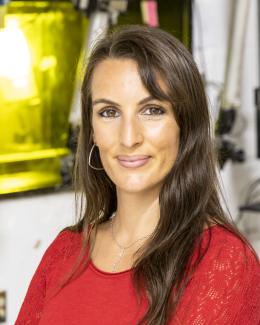Abstract
Post irradiation examinations (PIE) were performed on irradiated iron-chromium-aluminum (FeCrAl) specimens. These FeCrAl specimens were fabricated at the US Department of Energy's Oak Ridge National Laboratory (ORNL). The experimental setup involved subjecting FeCrAl cladding, along with UO2 pellets, to irradiation in the Idaho National Laboratory Advanced Test Reactor (ATR). In parallel, the FeCrAl alloy tubing without UO2 pellets was irradiated at ORNL's High Flux Isotope Reactor (HFIR). After irradiation, the ATR-irradiated rodlet was transported to an ORNL hot cell, where it was sectioned into multiple samples for the PIE and severe-accident testing. The sectioning process revealed that the fuel was not bonded to the cladding and could be easily detached from sectioned cladding slices. Microstructural analysis of the fuel cross sections demonstrated no significant interaction between the fuel and the cladding. Additionally, high-temperature steam oxidation tests on defueled cladding segments showed minimal oxygen uptake even at 1200 °C. The ATR-irradiated specimens began to exhibit signs of enhanced oxidation upon reaching a temperature of 1300 °C. Furthermore, enhanced oxidation was observed on the inner surface of the ATR-irradiated FeCrAl specimen, which had been subjected to 1300 °C for a duration of 1 min. By contrast, high-temperature steam oxidation experiments indicated that the HFIR-irradiated FeCrAl cladding provided good thermal stability when exposed to 1300 °C for up to 4 h. Comparative analysis encompassing the oxidation behavior of the ATR-irradiated fueled FeCrAl, HFIR-irradiated unfueled FeCrAl, and unirradiated FeCrAl suggests that the fuel–cladding interaction, although not visible via standard microscale electron microscopy measurements, may accelerate the deterioration of FeCrAl cladding in beyond-design-basis accident scenarios.






